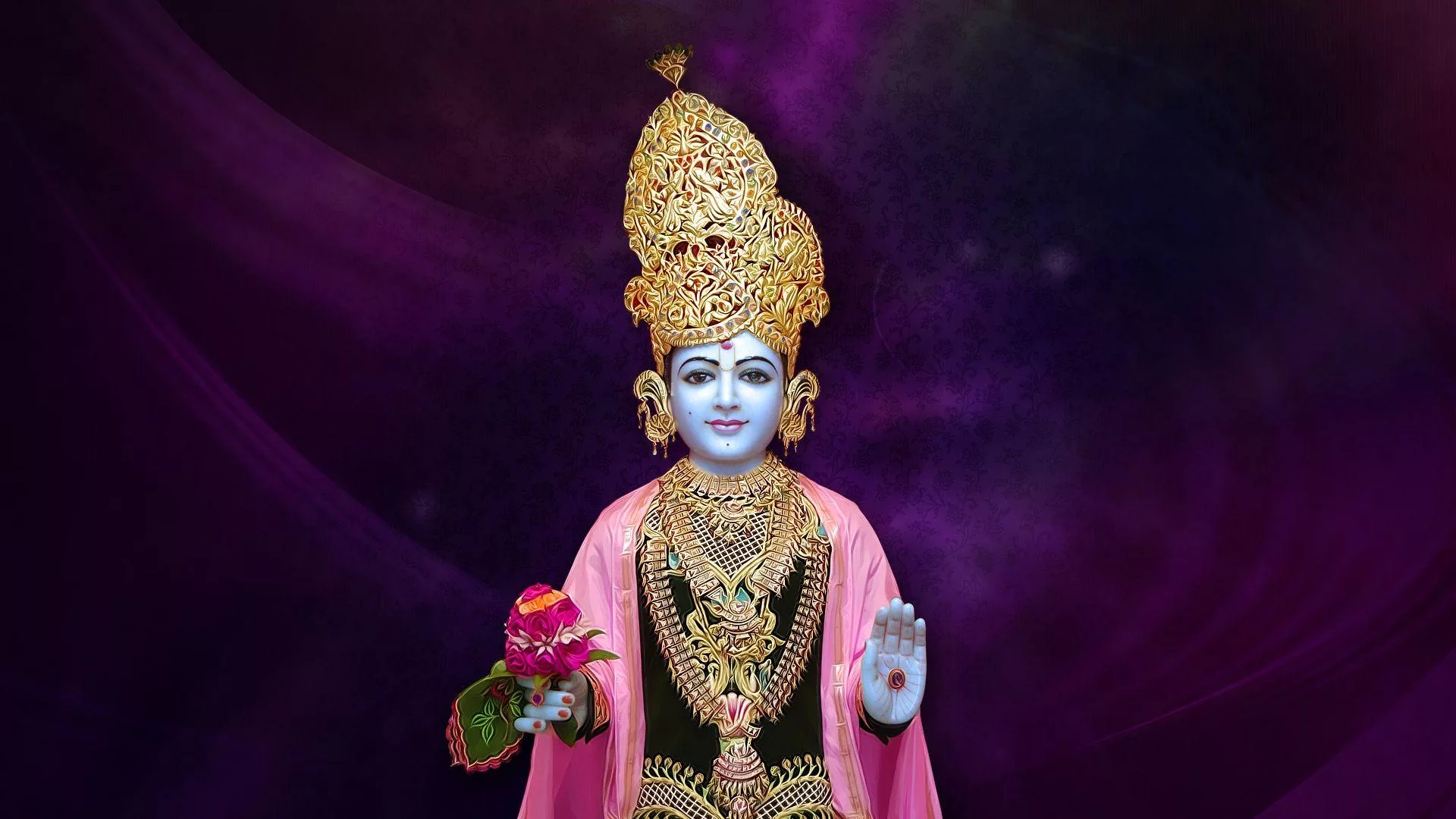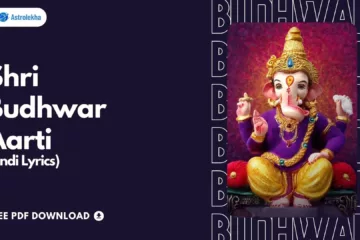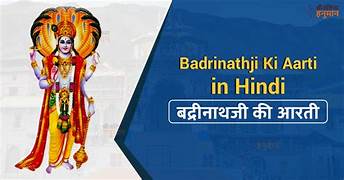Swaminarayan Aarti

1. Swaminarayan Aarti: An Introduction
The Swaminarayan sect is a branch of Hinduism based on the life and teachings of Lord Swaminarayan (1781–1830). Followers of this sect consider Lord Swaminarayan to be an incarnation of God. They follow the path of non-violence, pure conduct, and unwavering devotion to God Swaminarayan Aarti. Swaminarayan temples around the world are central to the beliefs and practices of this sect.
Importance of Aarti in Hindu religion
Aarti is an integral part of Hindu worship in which a lamp (or several lamps) is lit and rotated in front of various forms of God. It is often combined with the singing of hymns or stotras. Aarti is a symbol of light, love and devotion. It symbolizes the victory of light over darkness and the devotee’s complete surrender to God.
2. Glory of Swaminarayan Aarti
Swaminarayan Aarti is a beautiful stotra that praises the qualities and divinity of Lord Swaminarayan. It calls upon the devotees to take refuge in Him and realize their own divine nature. Let us look at some of the main phrases used in this aarti:
Explanation of ‘Jai Sadhguru Swami’ mantra
The basic mantra of Aarti is, “Jai Sadguru Swami.” It includes three key terms:
- Jai: means victory or victory
- Sadhguru: True Guru or spiritual guide
- Swami: Lord or Lord
The meaning of this mantra is, “Victory to the true Guru, Lord Swaminarayan.” It confirms the unbreakable bond between the devotee and God.
Spiritual benefits of aarti
Performing Swaminarayan Aarti regularly has many spiritual benefits:
- Increase in devotion: Aarti creates a deep feeling of love and devotion towards God.
- Peace of mind: Chanting of mantras and ritual of Aarti has a calming effect, bringing peace to the mind.
- Positive Vibrations: Aarti creates a pure and divine atmosphere, which attracts positive vibrations.
- Divine Grace: It is believed that aarti performed with devotion attracts divine blessings, which brings happiness and prosperity in the lives of the devotees.
3. Swaminarayan Aarti worship method
Swaminarayan Aarti is a simple yet powerful ritual that anyone can perform with true devotion. Here are the things you will need to perform the aarti and its method:
List of essential puja items
- Statue or statue of Lord Swaminarayan
- aarti thali
- A ghee lamp (preferably with multiple wicks)
- Kapoor
- Flower
- sandalwood paste
- incense or incense sticks
- bell
- pot full of water
Step by step description of puja method
- Preparation: Sit in a clean place and collect all the Aarti materials. Take a bath and wear clean clothes. Start with a calm mind.
- Invocation of the Lord: Light a lamp in front of the idol or statue of Lord Swaminarayan. If possible, burn camphor also. Offer sandalwood, flowers and incense sticks.
- Singing Aarti: Start reciting Swaminarayan Aarti with respect and devotion. If you don’t know the words to the aarti, you can listen to someone singing, or try singing along with the aarti.
- Deepak Parikrama: While reciting the Aarti, rotate the lamp in a clockwise direction around the idol or statue of Lord Swaminarayan.
- Ringing the bell: Ring the bell along with singing the Aarti. The sound of the bell helps ward off negative energies and invite divine presence.
- Archana: Holding the Kalash filled with water, chant mantras while offering water to the Lord.
- Aarti completed: Complete singing the Aarti and gently place the lamp in front of God. Take blessings of Lord Swaminarayan and meditate silently for a few moments.
Some things to keep in mind:
- Aarti is performed twice a day, once in the morning and once in the evening, although devotees can perform it more often as per their devotion.
- If you are at a Swaminarayan temple, participating in a community aarti ceremony can be an uplifting experience.
- The most important thing while performing Aarti is devotion. Proper rituals are important, but without a pure heart and a mind dedicated to God they do not serve their purpose.
4. Stories behind Swaminarayan Aarti
Swaminarayan Aarti has a rich history and legends behind it and has the power to touch your soul. To understand this, we need to travel to the time of Lord Swaminarayan.
Swaminarayan Bhagwan as Avatar
Followers of the Swaminarayan sect believe that Lord Swaminarayan incarnated on earth to restore dharma (moral order) and lead his devotees to salvation. During his lifetime, his devotees honored him with extraordinary qualities and divine powers. Aarti is a reflection of this reverence and faith.
Creation of Aarti and its preservation through generations
The original Swaminarayan aarti, “Jai Sadhguru Swami,” is believed to be composed by Muktananda Swami, who was one of the chief disciples of Lord Swaminarayan.
Many other devotees and poets have also composed different versions of Swaminarayan Aarti over time. These aartis praised the various qualities, miracles and teachings of Lord Swaminarayan. These compositions were made a part of the worship rituals in various Swaminarayan temples.
Stories that show the importance of Aarti
Many stories related to Aarti are prevalent in the history of Swaminarayan sect. Here are some that show the power of Aarti:
- Direct Grace of the Lord There is a story in which a devotee became overwhelmed with emotion due to excessive devotion during the Aarti. During this time the devotee had darshan of Lord Swaminarayan and received blessings from him.
- Freedom from distress Another legend tells how a devotee performed aarti regularly to recover from a serious illness. His devotion and recitation of aarti played an important role in restoring his health.
Such stories strengthen the belief in the power of Swaminarayan Aarti and the possible blessings during its ritual.
5. Devotee Experience
Swaminarayan Aarti can have a deep impact in the lives of devotees. Their stories are a testament to the power of faith and the benefits of performing Aarti regularly. Here are some personal stories that make Aarti a living experience:
- Inner Peace: “When I sing Swaminarayan Aarti I feel immense peace. All my thoughts disappear, and my mind becomes calm. Aarti is a place where I connect with God, and connecting with him makes me feel complete from within.” – Reena Patel, Mumbai
- Guidance in daily life: “I start my day with Swaminarayan Aarti. It gives me strength to face challenges in life. Aarti’s words resonate in my heart and guide me on the right path throughout the day.” – Kishore Mehta, Ahmedabad
- Spiritual Awakening: “There was a time when I felt lost in my life. A friend suggested me to go to Swaminarayan temple and attend the aarti. The rhythmic chanting of the Aarti and the deep devotion of the devotees touched my soul. “It fueled my spiritual journey and helped me find a sense of purpose in my life.” – Vivek Shah, Vadodara
Stories of devotees demonstrate the transformative impact of Aarti on an individual level. Aarti is a spiritual tool that provides peace, guidance and a community that places devotion at the center of life.
6. Mantras used in Aarti
In addition to the basic mantra (“Jai Sadhguru Swami”), other mantras and hymns (praise songs) are often included in the Swaminarayan Aarti. Here is the text of some important mantras and their meanings:
Basic Mantra:
- Jai Sadguru Swami, Lord of bliss, Parabrahma Purushottam, the manifested divine form.
- Meaning: Glory be to the True Guru Swaminarayan Bhagavan, who is the embodiment of bliss, the Supreme Lord, and the Supreme Being, has appeared in His divine form.
Other mantras and hymns:
- Swaminarayan Nita Anand Re the divine abode, Hans Paramahamsana Swamine the best.
- Meaning: Swaminarayan always resides in the blissful, divine abode. He is the greatest among devotees (Hamsa) and saints (Paramahamsa).
- Shri Sahajanand Swami, Maryada Purushottam Re, Pragat Purushottamne Vandu, Shri Harine Kar Jod Re.
- Meaning: I bow to Sri Sahajanand Swami (another name of Lord Swaminarayan), Administrator Purushottam. Salutations to Him, the Supreme Lord, with folded hands.
Importance of mantras
These mantras praise Lord Swaminarayan, describe his divine qualities, and express the devotee’s deep devotion towards him. Repeatedly chanting the mantras destroys the ego and one feels a deep connection with God in one’s heart.
Things to note:
- There may be variations in the mantras used during Swaminarayan Aarti within different Swaminarayan temples and sects.
- To understand the correct pronunciation and meaning of the mantras, devotees should consult a senior devotee or the Swaminarayan temple.
7. Benefits of Swaminarayan Aarti
Performing Swaminarayan Aarti has many spiritual, mental and emotional benefits. Here are some of the key benefits:
- Increase in devotion: Aarti creates a deep feeling of love and devotion towards God. It helps devotees to deepen their connection with their divine nature.
- Mental Peace: Chanting of mantras and ritual of Aarti has a calming effect, which brings peace to the mind. Aarti can help in reducing worries and stress, leading to a feeling of peace.
- Spiritual Advancement: Aarti connects a person with the materialistic world and leads him to the path of self-realization. It is considered helpful in the spiritual journey focused on attaining moksha (liberation).
- Positive Vibrations: Aarti creates a pure and divine atmosphere, which attracts positive vibrations. It has the ability to remove negativity and attract happiness and prosperity in the life of the devotee.
- Divine Grace: Aarti performed with devotion attracts divine grace, which brings happiness and prosperity in the lives of the devotees. It is believed that by the grace of God, troubles go away and the path of life becomes easier.
- Community spirit: Performing aarti in a temple or sangat (religious gathering) builds determination and community spirit. Collective Aarti brings like-minded people together and reinforces the shared devotional feeling towards God.
Relevance:
These spiritual benefits are the main ones based on the beliefs of the Swaminarayan sect. Discussing these in detail would be in line with the structure of this blog.



0 टिप्पणियाँ